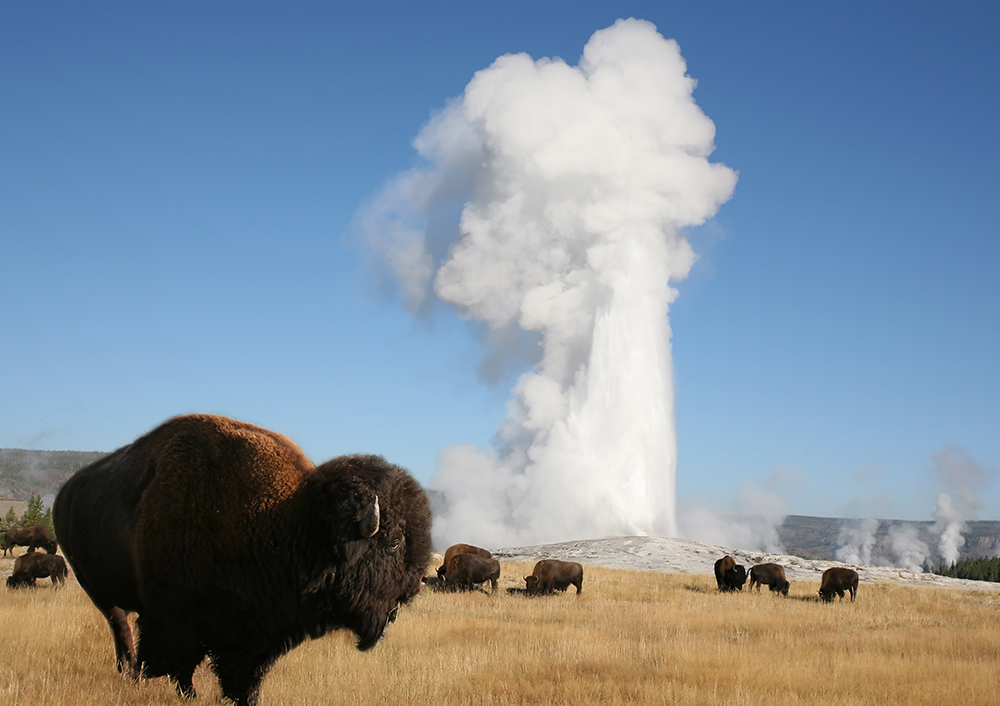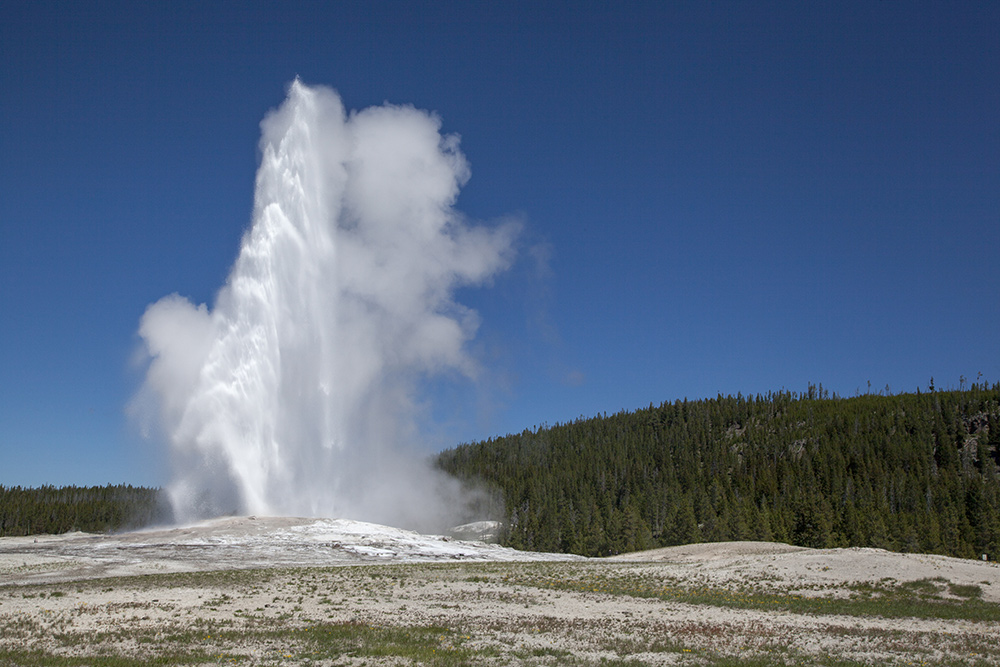Old Faithful is one of the most well-known geysers in the world. Located in Yellowstone National Park, this incredible natural feature has been drawing visitors for more than a century. However, despite its celebrity, there is still plenty most people don’t know about Yellowstone’s most popular geyser. Here is a brief history of Old Faithful, along with a few little-known facts about this famous landmark for a better understanding the next time you tour Yellowstone.

HISTORY OF OLD FAITHFUL
Old Faithful was named by the Washburn Expedition of 1870, who explored the area that would later be called Yellowstone. Members of the expedition entered the Upper Geyser Basin after traveling down the Firehole River and saw the geyser, which they called Old Faithful because of the regularity with which it erupted.
Geysers like Old Faithful are only formed under specific conditions, making them relatively rare. Magma under the Earth’s surface superheats pockets of underground water, building pressure that eventually pushes the water upwards. Rhyolite, a volcanic rock high in silica content, lines the tunnel through which the water escapes its underground pocket, creating a pipe that can withstand the incredible heat and pressure as the water erupts above ground.
LITTLE KNOWN FACTS ABOUT OLD FAITHFUL
- Old Faithful was the first named geyser in Yellowstone.
- Despite popular belief, the geyser doesn’t erupt every hour on the hour. It currently erupts every 91 minutes on average.
- You can download an app that gives you the approximate time of Old Faithful’s next eruption.
- In the early days of the park, people sometimes used the geyser to wash their clothes. Explore
- rs and other visitors would throw their clothes into the geyser between eruptions and wait for them to be shot back out, thoroughly clean. According to reports, woolen garments did not fare well, but other types of fabrics seemed to do just fine.
- The water that erupts from Old Faithful has been measured at 204° F while the temperature of escaping steam can be hotter than 350° F.
RECENT RESEARCH AND THE FUTURE OF OLD FAITHFUL
In recent years, research has shown that the interval between Old Faithful’s eruptions has been getting longer. In the 1960s, the average interval between eruptions was 66 minutes, quite a bit shorter than today’s 91 minutes. It is uncertain what is causing the change. The National Park Service attributes lengthening intervals to earthquake activity, which can affect the structure of the water system below ground.

Other possibilities include changes to the water table, climate change, or human activities like water diversion and construction projects. In the short term, the lengthening intervals merely demand that visitors wait a little longer to see the big show. As for future generations, there might be a day when Old Faithful will be nothing more than a history lesson.
Until then, visitors will undoubtedly continue to come from all over the world to witness the incredible display of Old Faithful erupting. Visitors touring Old Faithful will be amazed by the majestic natural power of the landmark. The geyser, an iconic part of Yellowstone’s past and present, will continue to be a hub of tourism in the park.